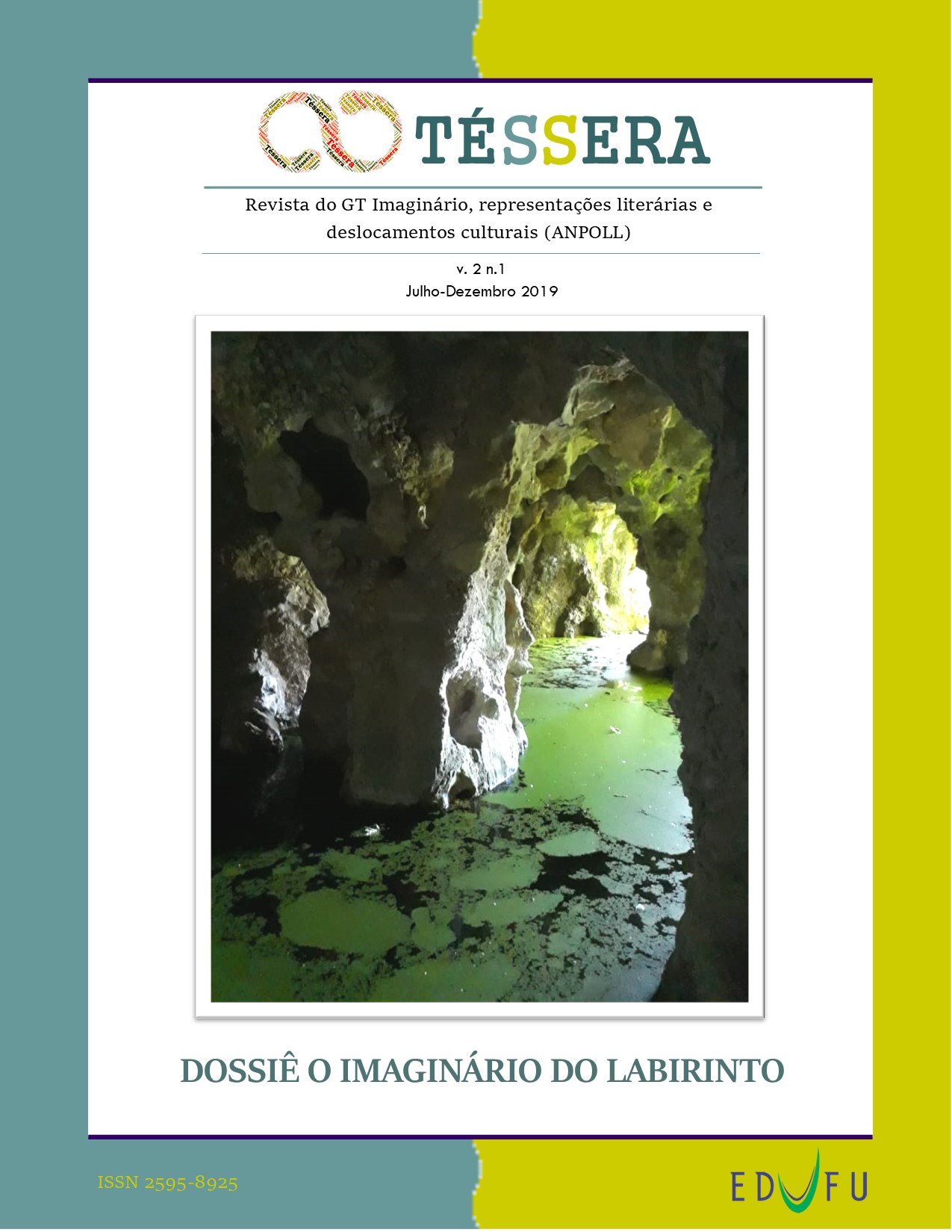FROM A SYMBOLIC FIGURE TO THE EMBLEM OF EDUCATION
CROSSING GLANCES OVER THE LABYRINTH
DOI:
https://doi.org/10.14393/TES-v2n1-2019-51187Keywords:
Labyrinth, Initiatic, Education, Learning, InteriorityAbstract
The symbolic figure of the maze proves to be an extremely pregnant mythic-symbolic complex of the mythical and educational imaginary. In this article the author establishes a dialogue with authors who have studied the symbolic and construction of such maze and questions the educational implications that derive from the symbolic figure of this symbolic maze. Taking the labyrinth as an emblem of education understood as spiritual transmutation, he finds that all initiatory education must follow the teachings that derive from it and create conditions for the initiate to enter within, to discover himself/herself and to understand the meaning of its depth. It is a experiential process, a process of discovery and learning rather than of teaching, where the protagonist is the learner himself
Downloads
References
AGOSTINHO de HIPONA, A verdadeira religião/De uera religione. Edição bilíngue português/latim, Tradução de Paula Oliveira e Silva e Manuel Ramos. Porto: Edições Afrontamento, Porto, 2012.
ARAÚJO, Alberto Filipe; ARAÚJO, Joaquim Machado. Dédalo e o labirinto. A figura simbólica do labirinto como emblema da educação, Itinerários de Filosofia da Educação, nº 9, 2º semestre de 2010, 5-20
BACHELARD, Gaston. La Terre et les Rêveries de la Volonté. 8è réimp.. Paris: Librairie José Corti, 1976.
___________. La Terre et les Rêveries du Repos. Essai sur les images de l’intimité. 16è réimp.. Paris: José Corti, 1992.
CASTRO, Federico Gómez R. de Castro. Navegar en el Labirinto. In BENITO, Agustín Escolano; Díaz, José María Hernández (Coords.). La memoria y el deseo. Cultura de la escuela y educación deseada. Valencia: Tirant lo Blanch, 2002, pp. 495-517.
DÉTIENNE, Marcel ; VERNANT, Jean-Pierre. Métis. As astúcias da inteligência. Trad. de Filomena Hirata. São Paulo : Odysseus Editora, 2008.
DURAND, Gilbert. Permanences & Metamorphoses du Labyrinthe. In LAMBERT, Jean-Clarence (Sous la dir. de). Le Labyrinthe. Forme. Métaphore. Paris-Lisbonne: Centre Culturel Portugais/Fondation Calouste Gulbenkian, 1985, pp. 9-12. [Colóquio organizado, em Maio de 1984, no quadro do Festival do Labirinto, em Paris, no Centro Cultural da Fundação Calouste Gulbenkian]
___________. Perenidade, Derivações e Desgate do Mito. In CHAUVIN, Danièle (Textos reunidos por). Campos do Imaginário. Trad. de Maria João Batalha Reis. Lisboa: Instituto Piaget, 1998, pp. 91-118.
___________; SUN, CHAOYING. Mythe, thèmes et variations. Paris: Desclée de Brouwer, 2002.
FREITAS, Lima de. O Labirinto. Lisboa: Arcádia, 1975.
FRONTISI-DUCROUX, Françoise. Dédale. Mythologie de l’artisant en Grèce ancienne. Paris: La Découverte & Syros, 2000.
LLÉDO, Emilio. Memoria de la ética. Barcelona: Herder, 1994.
MOSCATO, Maria Teresa (1998). Il Sentiero nel Labirinto. Miti e metafore nel processo educativo. Brescia: Editrice la Scuola.
SANTARCANGELI, Paolo. Le livre des labyrinthes: histoire d’un mythe et d’un symbole. Trad. de Monique Lacau. Paris: Gallimard, 1974.
YATES, Frances Amelia. A arte da memória. Trad. de Flavia Bancher. Campinas: Editora da Unicamp, 2007.
Downloads
Published
How to Cite
Issue
Section
License
Authors who publish in this journal agree to the following terms:
Authors retain the copyright and waiver the journal the right of first publication, with the work simultaneously licensed under the Creative Commons Attribution License (CC BY-NC-ND 4.0), allowing the sharing of work with authorship recognition and preventing its commercial use.
Authors are authorized to take additional contracts separately, for non-exclusive distribution of the version of the work published in this journal (publish in institutional repository or as a book chapter), with acknowledgment of authorship and initial publication in this journal.


